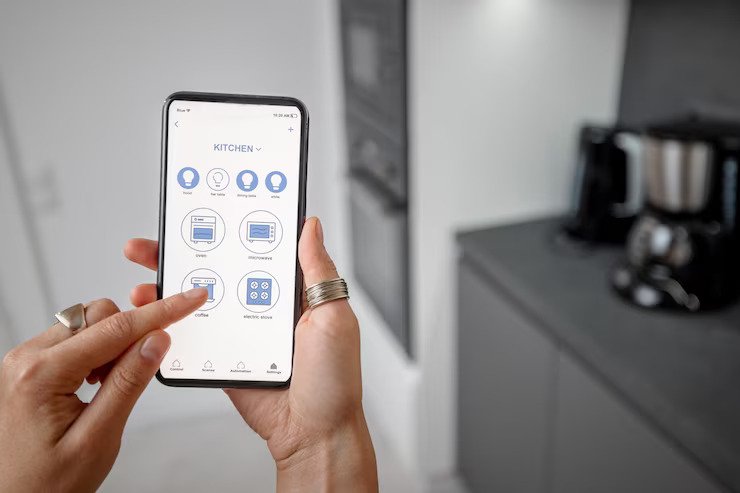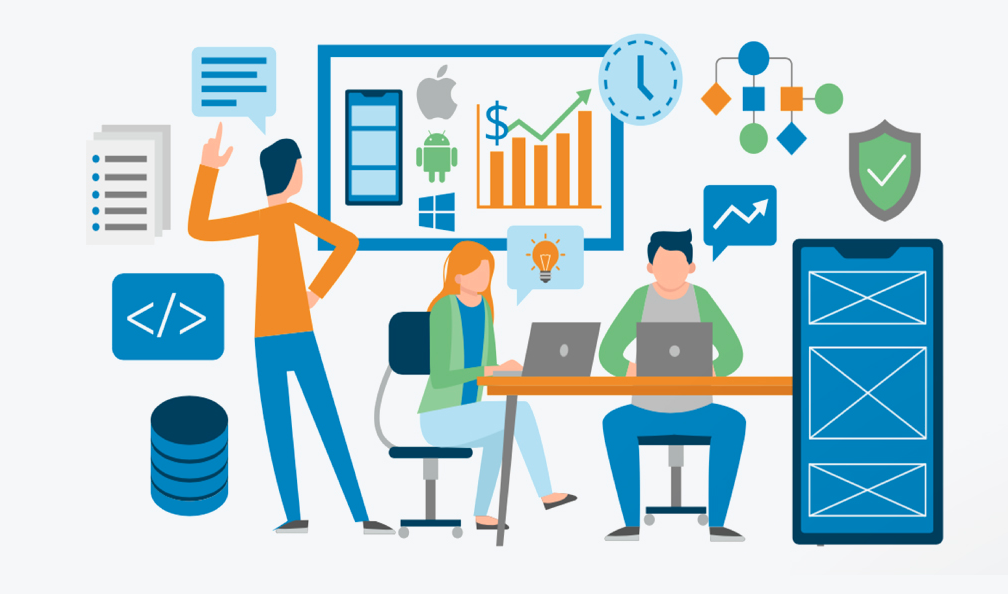home management app development can be a great business idea as it can provide convenience to homeowners and generate revenue for service providers. Keep in mind that developing a home service app can be a complex and time-consuming process. It’s important to have a team of experienced developers, designers, and marketers to ensure the success of your app.
What is Home Service App?
A home service app is a platform that connects homeowners with local service providers for various household services such as cleaning, plumbing, handyman work, lawn care, and many more. The app typically allows homeowners to schedule services, receive quotes, and pay for services directly through the app. Meanwhile, service providers can use the app to manage their schedules, accept job requests, and receive payments.
Home service apps have become increasingly popular in recent years, as they provide convenience and a hassle-free way for homeowners to find and book services. They also offer a new way for service providers to connect with customers and grow their businesses. Overall, home service apps make it easier for homeowners to take care of their homes and for service providers to find work.
Benefits of Home Management Application:
- Organization and Efficiency: A home management app helps users organize various aspects of their home, such as schedules, tasks, and expenses, leading to increased efficiency and reduced stress.
- Centralized Information: Users can store all essential home-related information in one place, including utility bills, maintenance schedules, and important contacts, making it easy to access when needed.
- Task and Chore Management: The app can assist in assigning and tracking household chores and tasks, promoting accountability among family members and ensuring a well-maintained home.
- Budgeting and Expense Tracking: Home management apps often include budgeting features that allow users to track expenses, set financial goals, and monitor spending, promoting better financial management.
- Reminders and Notifications: The app can send timely reminders for bill payments, upcoming appointments, and maintenance tasks, helping users stay on top of their responsibilities.
- Inventory Management: Users can manage their household inventory, including groceries, cleaning supplies, and other essentials, making it easier to restock items when needed.
- Home Security: Some apps offer security features, such as monitoring cameras and alarm systems, providing peace of mind and ensuring the safety of the home.
- Energy Efficiency: Home management apps can integrate with smart home devices, enabling users to control energy consumption and reduce utility bills.
- Communication and Collaboration: Family members can communicate and collaborate within the app, sharing important updates and coordinating activities, leading to better teamwork.
- Data Insights: The app may provide data analytics and insights, such as energy usage patterns or spending trends, helping users make informed decisions to improve their home management strategies.
- Time-Saving Features: By automating repetitive tasks and offering quick access to information, the app saves time and allows users to focus on other priorities.
- Customization: Many home management apps offer customizable features, allowing users to tailor the app to their specific needs and preferences.
Overall, a home management application can streamline daily tasks, enhance communication, and improve the overall quality of life by promoting a well-organized and efficient home environment.
Key Features of Home Management Application
A home management application can have various features depending on its purpose and target audience. Here are some common key features that can be found in a home management application:
- Schedule management: The app allows users to schedule tasks and appointments, such as cleaning, repairs, and maintenance.
- Service provider search: The app helps users find local service providers for various home-related tasks, such as plumbing, electrical work, cleaning, and landscaping.
- Booking and payment: Users can book services and pay for them through the app, either by credit card or other digital payment methods.
- Task management: The app allows users to manage and track ongoing home-related tasks, such as grocery shopping, laundry, and cleaning.
- Inventory management: The app helps users keep track of household inventory, such as groceries, cleaning supplies, and home essentials.
- Home automation integration: The app can integrate with home automation systems, such as smart thermostats, lighting, and security systems, to enable control from a single platform.
- Energy management: The app helps users track and manage energy consumption, such as electricity and water usage, to promote energy efficiency.
- Home security: The app can provide home security features, such as remote monitoring, alerts, and notifications.
- Data analysis and insights: The app can provide users with insights and recommendations based on their data, such as energy consumption patterns, task completion rates, and service provider reviews.
Overall, a home management application aims to simplify the management of home-related tasks, save time, and improve efficiency for homeowners.
Technology Stack for Home Service App Development
The technology stack for a Home Service App development typically involves a combination of front-end, back-end, and database technologies. Here’s a commonly used technology stack for building such an app:
- Front-end Development:
- React Native or Flutter: These cross-platform frameworks allow for the development of both iOS and Android apps using a single codebase, reducing development time and cost.
- JavaScript (or TypeScript): The primary programming language for building the user interface and logic in React Native or Flutter.
- Back-end Development:
- Node.js: A popular server-side JavaScript runtime environment that provides excellent performance and scalability, ideal for handling real-time requests in a home service app.
- Express.js: A lightweight and flexible web application framework for Node.js, commonly used for routing and building the API layer.
- Django: A high-level Python web framework that simplifies back-end development with its built-in functionalities like authentication and database management.
- Database Management:
- MongoDB: A NoSQL database known for its flexibility and ability to handle large amounts of unstructured data. It’s suitable for storing user profiles, service provider details, and service requests.
- MySQL or PostgreSQL: Relational databases that work well for structured data and can be used for features like payment processing and order management.
- Cloud Services:
- Amazon Web Services (AWS) or Google Cloud Platform (GCP): These cloud platforms provide scalable and reliable hosting solutions, storage options, and serverless computing for app deployment.
- Real-time Communication:
- Socket.io: A library for enabling real-time, bidirectional communication between the app and the server, useful for chat features and live updates.
- Payment Gateway Integration:
- Stripe or PayPal: These popular payment gateways offer secure and seamless payment processing for users to pay for services within the app.
- Geolocation and Mapping:
- Google Maps API or Mapbox: These mapping services provide geolocation features for displaying service provider locations, finding nearby services, and tracking service requests.
- Push Notifications:
- Firebase Cloud Messaging (FCM) or OneSignal: These platforms enable sending push notifications to users, keeping them updated on service status, offers, and promotions.
- Authentication and Security:
- JSON Web Tokens (JWT) or OAuth 2.0: These protocols provide secure authentication and authorization for users and service providers.
- Testing and Debugging:
- Jest or Enzyme: Popular testing frameworks for React Native or Flutter to ensure app functionality and code quality.
- Postman: A tool for testing APIs and backend functionality.
This technology stack can serve as a solid foundation for building a feature-rich and robust Home Service App. However, the specific stack may vary depending on the development team’s expertise, project requirements, and scalability considerations.
Cost to Build a Home Management Service App
A home management app development cost can vary greatly depending on several factors, such as the app’s complexity, features, platform, development team, and location. Factors that affect costs include:
- Platform: The cost can differ based on whether the app is developed for iOS, Android, or both platforms.
- Features: The cost will depend on the app’s features and complexity, such as the number of integrations, user types, payment systems, and scheduling options.
- UI/UX Design: Design quality and the amount of design required will impact the cost of the app development.
- Development team: The cost will depend on the development team’s size, expertise, and location.
- Testing and deployment: The cost will also include app testing, quality assurance, and deployment.
Generally speaking, developing a home management service app can range from $80 – $100 per hour or more in the USA, depending on the above factors. It’s essential to work with an experienced development team who can help you identify the app’s requirements and provide a realistic budget estimate based on your specifications.
Explore More: How Dumpster Rental Fits into a Sustainable Waste Management Plan
Conclusion
To develop a successful home management app, it’s important to conduct thorough market research, define the scope and functionality of the app, choose the right platform and development framework, design and develop a user-friendly app, implement a secure payment system, launch and market the app, and continuously monitor and improve the app based on user feedback.
When choosing a company to develop your home management app, look for a team with experience in app development, UI/UX design, and marketing. Consider their track record of successful mobile app development and ensure that they have the necessary skills to deliver a high-quality app that meets your requirements.
Keep in mind that building a home management app can be a difficult and time-consuming process, but with the right team and approach, it can be a successful venture that provides value to homeowners and service providers alike.




Thanks for sharing this useful post, keep up the good work.